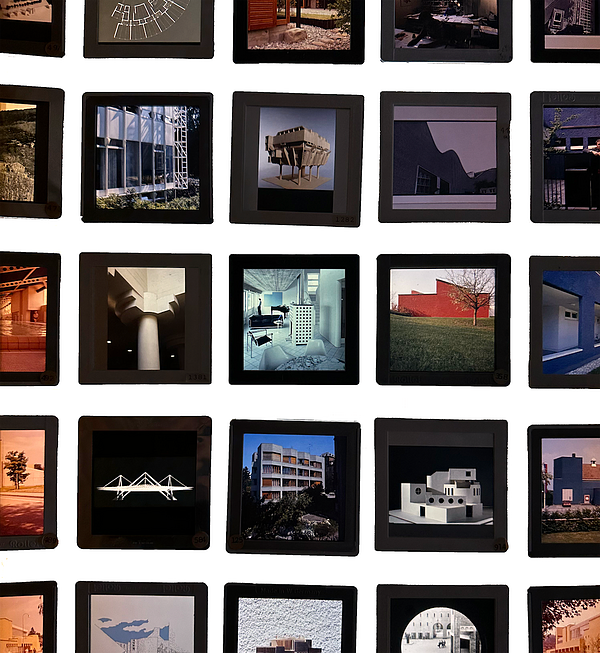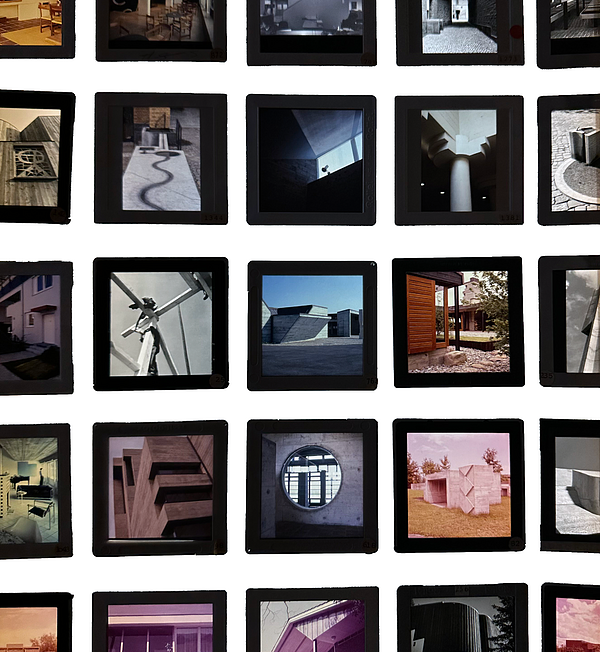The Importance of Being Ernst
The Importance of Being Ernst

Atelier Gisel is seeking applications from twenty-four early career architects to resume professional and creative activities of one of Zurich most important architectural practices. Applicants should demonstrate an interest in documenting, re-imaging and extending the practice’s seminal architectural oeuvre built between the 1940’s and the 1990’s.
Atelier Gisel is a three-storey building near Klusplatz, designed in 1973 for and by the office of Ernst Gisel, surrounded by mature gardens behind a housing block. Following the closure of the office after six decades of professional practice, Gisel gifted the atelier, and his archive, to ETH for practising architecture.
This spring, we are fortunate to be based in the beautiful daylit spaces of Atelier Gisel, which will be passed from studio to studio on a semester-by-semester basis. Gisel’s former office embodies many of the qualities that set the gold standard in design and building culture in Zurich. Working on the same desks that many places in the city were designed on, we will use the occasion to immerse ourselves in the design culture of the office.We shall use our direct experience of the studio and our access to the archive as a starting point for translations of past exemplars into contemporary questions.
Public housing and private houses, factories and offices, churches, schools and universities, studios and galleries. Megastructures and furniture. Alongside his signature housing-atelier typology, repeated several times in Zurich, there are few building types or scales of design that are not part of the oeuvre of Ernst Gisel. And there are even fewer architects’ practices that characterise the best architectural and building culture of Zurich so consistently over six decades. This is not about canonising another white male architect, but rather to explore a practice and the culture that surrounds us - literally in the case of the studio this semester.
Playful, sculptural and highly crafted, yet modest, the architecture coming out of Gisel’s office merges into the city fabric. High Modernism of the 1940’s is the foundation for a career that passes through sculptural Brutalism into pop-inspired Postmodernism while retaining a distinctive Zurich accent. And while Gisel practiced all over Switzerland, in Germany and Austria, the quantity and quality of buildings in Zurich secures Gisel’s place in the city’s architectural history.

Translations
Architecture has always been the outcome of translations; from thought to paper and into the hand of the maker, from histories into futures without ever leaving the present, from prototype to type. Good translations aim to be faithful to the original but always produce something new. But how does translation work? What is the difference between translation and interpretation? Why are there a dozen translations of Proust into English when the original translation is considered a classic? The great American writer Lydia Davis, celebrated for her original short stories and translations of Proust and Flaubert, has written about the freedom found in translating. The translator can immerse themselves purely in language fully absorbed in the original work. They are not burdened with the totality of invention but in finding new words to tell a story in a new language. The sensitivity to another author’s language will make a better writer. And, however good a translation, it is just one interpretation of an infinite number. In architecture, a change in material can act like translating into a different language – vocabulary, etymology, grammar and idiom all find parallels in material culture.
Translation from one material to another is as old as architecture itself. Ancient classicism expresses timber construction in stone. Triglyphs are the memory of the ends of timber beams while fluting evokes stalks gathered into a column. And occasionally, in Japanese architecture, stone can be carved like timber. But translation is not symmetrical. A change from stone to timber is not the same as timber to stone. The translated work, which always carries traces of its conception, is new. The production of architecture passes through many scales and materials. Drawings, from figure-ground to construction detail are not simply zooming in or out, they are fundamentally different ways of seeing and thinking. As drawings pass into models, they will transform again – often far away from the intended construction in order to be true to the idea and the model. And today more than ever, we need to be much more attentive to how the world is put together and the impact of extraction on diminishing resources and climate change.

Translation Zurich
Our focus will remain in Zurich, on buildings and projects that we can visit and study alongside the extensive archives held by gta in the basement of the atelier. The studio will be structured by three sequential translations; first to produce an Atlas of key Gisel buildings. Working at multiple scales, you will survey the case studies from distinct details to normative tectonic strategies, spatial outcomes, social impact and crucially calculate their embodied energy - even though they were built before CO2 emissions were a critical factor in architectural design. Making and craftsmanship are key to the quality of Gisel’s architecture. Your task will be to make a fragment that translates the whole into an autonomous artefact, a kind of touch stone for the architecture you can reflect on and develop later. You will then translate the same building as if you would build it now.
The fragment may be seen as extracting the essence of the architecture from the building to make an artefact that can be placed and used independently. Re-designing the building construction for our own ages will, on the other hand, be about integrating; translating the construction of previous epochs into contemporary issues.What material strategies would one develop to achieve the same refinement, the same genus loci but in the era of climate emergency?
You will then apply the new principles to extend the original building and landscape to address the pressing need for densification and the loss of biodiversity throughout the city. The task may seem straightforward and modest at first, but it will require a rigorous and radical imagination to develop a contemporary architecture that is both specific and could become the standard for which architecture aspires. Low carbon, accessible, playful, sculptural, expressive or discreet; they can all work as long as you remember the importance of being Ernst.
Garden, if Gisel were a flower…
As we will not be based at Hönggerberg, we propose a lighter garden project than usual. We will use the one week between seminar week and Easter to work together to maintain, prune and prepare the garden for spring and summer, including our final reviews. Colour is a significant yet often overlooked quality in Gisel’s architecture, we shall plant summer flowers that will blossom Prussian blue, aquamarine, dusty rose, slate, eggshell white … just a few colors that envelope Gisel buildings.